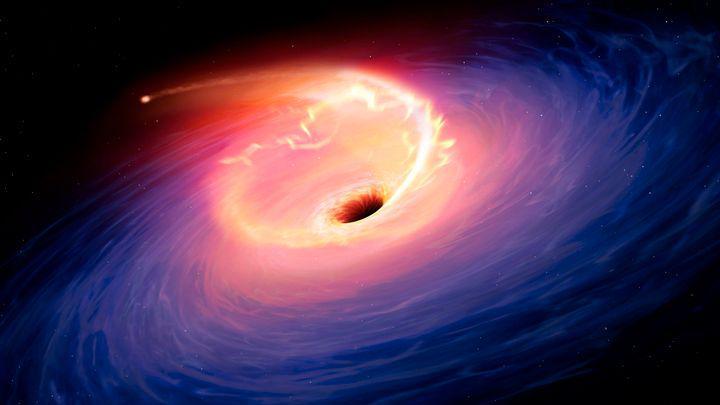Massive black hole spotted taking a 'nap' in the early universe

- Published
If you, or someone you know, likes to have a little snooze after eating a big meal - then you're not alone.
It appears that some objects in space do exactly the same thing!
Scientists have spotted a massive black hole taking a 'nap' after stuffing itself full of cosmic gas.
The discovery was made using the world's most powerful telescope - Nasa's James Webb Space Telescope.
More space news
Astronauts stuck onboard the ISS have return delayed again
- Published18 December 2024
Astronaut snaps picture of dwarf galaxies from the ISS
- Published16 December 2024
Nasa says Voyager 1 spacecraft working normally again
- Published5 December 2024
What did scientists find?

Nasa launched the James Webb telescope on 25th December 2021 on its mission to show the first stars to light up the Universe
An international team of experts, led by the University of Cambridge, used the James Webb Space Telescope to find the black hole.
It was spotted in the early universe, just 800 million years after the Big Bang.
At 400 million times the mass of our Sun, the black hole is so big, it's one of the most massive ones ever discovered by the telescope at that point in the universe's history.
However, despite its gigantic size, scientists spotted that the black hole was eating the gas it needs to grow at an extremely slow rate, essentially making it dormant - meaning 'asleep'!
Experts were also surprised at how big the black hole was.
Lead author of the study, Ignas Juodžbalis, said: "The early universe managed to produce some absolute monsters, even in relatively tiny galaxies."
Scientists have a few theories on how the black hole could have got so big.
Professor Roberto Maiolino, who also worked on the project, explained: "It's possible that black holes are 'born big'.
"But another possibility is they go through periods of hyperactivity, followed by long periods of dormancy," he added.
What is a black hole?

An illustration of a black hole shredding a star.
Black holes are formed when a dying star collapses inward under the pressure of its own weight.
This leads to something called a supernova, a star's extremely powerful explosion.
Black holes are places in space where the pull of gravity is so strong that even light can't escape from it. This is what makes them invisible.
